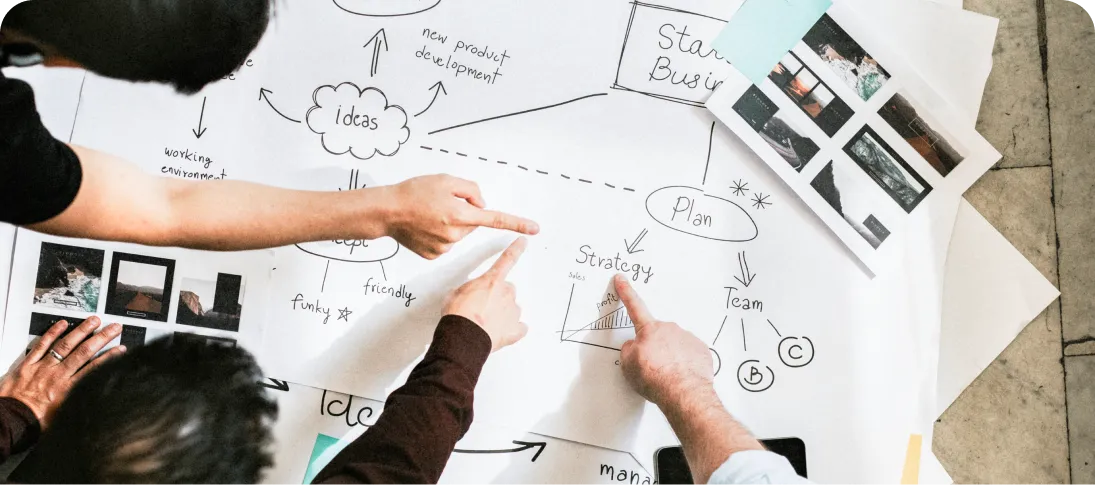A product roadmap is a strategic document that outlines the vision, direction, and progress of a product over time. For engineering teams, a roadmap serves as a crucial guide, providing clear insight into upcoming features, timelines, and development priorities. In essence, it’s a bridge between technical execution and business goals, helping teams align their work with larger company objectives.
Developing a successful product without a well-defined roadmap is like navigating a ship without a compass. A winning product roadmap not only provides direction but also adapts to changes in customer needs, market conditions, and company priorities. For engineering teams, this roadmap is key to ensuring that resources are used efficiently and that development efforts are focused on what matters most to the business.
Whether you’re working with a startup or an established enterprise, creating a well-structured roadmap can lead to smoother product launches, faster time-to-market, and higher customer satisfaction.
Why Do Engineering Teams Need a Product Roadmap?
A product roadmap isn’t just for product managers or executives—it’s a critical guide for engineering teams. Here’s why it matters:
- Aligning with Business Goals: The roadmap ensures that engineering efforts are aligned with broader business objectives, such as increasing revenue, improving customer retention, or expanding into new markets.
- Improved Communication: A roadmap acts as a bridge between different teams (e.g., marketing, sales, and development), helping to synchronise efforts and clarify priorities, timelines, and milestones.
- Faster Time-to-Market: A well-defined product roadmap helps engineering teams prioritise key tasks, reduce development time, and speed up product releases.
Without a roadmap, teams risk misalignment, communication gaps, and delays, all of which can negatively affect product outcomes.
Core Components of a Winning Product Roadmap
To create an effective product roadmap, you need to focus on several core elements:
- Vision and Goals: Start with a clear product vision that aligns with your company’s long-term goals. This gives the roadmap direction and helps the team focus on what truly matters.
- Prioritised Features: Identify the most important features based on customer needs, market trends, and business impact. Techniques like MoSCoW (Must have, Should have, Could have, Won’t have) can help prioritise effectively.
- Timelines and Milestones: Set clear deadlines and major milestones to keep the team on track, while allowing room for adjustments based on new information or shifting priorities.
Best Practices for Engineering Teams
Creating a winning product roadmap isn’t just about defining the features and deadlines—it’s about ensuring that engineering teams have the right framework to succeed. Here are some best practices that engineering teams should follow to develop an effective product roadmap:
- Collaborate Across Teams: Engage product managers, marketing, sales, and customer success teams to ensure the roadmap reflects a well-rounded view of the product’s goals and user needs.
- Maintain Flexibility: A roadmap should evolve. Build flexibility into the plan so that engineering teams can pivot quickly if market conditions, customer feedback, or priorities change.
- Use Visual Tools: Visual tools like Jira, Trello, and Asana help teams clearly see the progress, deadlines, and priorities, making communication and alignment easier across teams.
Using Agile Methodology in Roadmap Creation
Incorporating Agile methodology into your product roadmap helps maintain flexibility and ensures continuous improvement. Here’s how Agile benefits roadmap creation:
- Quick Adaptation: Agile’s iterative approach allows teams to adapt quickly to new information, customer feedback, or shifting business goals. This is essential for keeping the roadmap relevant.
- Continuous Feedback: Agile encourages regular feedback from stakeholders and customers, allowing teams to adjust the product roadmap as needed and focus on delivering the most valuable features.
- Cross-Team Collaboration: Agile fosters collaboration between engineering teams and other departments, ensuring alignment on priorities and timelines.
How to Prioritise Features Effectively
Feature prioritisation is key to building a winning product roadmap. Here are methods to ensure your engineering team focuses on the right tasks:
- MoSCoW Method: Categorize features into Must have, Should have, Could have, and Won’t have. This helps focus on the most critical tasks without overloading the team.
- RICE Scoring: Use Reach, Impact, Confidence, and Effort (RICE) to prioritise features based on their potential business value and technical feasibility.
- Balancing Customer Needs and Technical Feasibility: Always balance user feedback with the technical resources available. Features that are highly valuable but complex can be broken down into smaller, manageable steps.
Tools and Technologies for Product Roadmaps
Choosing the right tool for building and maintaining your product roadmap is essential. Here are some of the most popular tools:
- Jira: Widely used by engineering teams for sprint planning, issue tracking, and roadmapping. Ideal for teams using Agile methodology.
- Trello: A visual, card-based tool that’s perfect for smaller teams or simpler projects, offering flexibility and ease of use.
- Asana: Combines project management with roadmap features, making it useful for larger teams managing complex product development cycles.
Tracking Progress and Key Metrics
Monitoring progress and key metrics ensures that your product roadmap stays on course. Here are essential metrics for tracking roadmap success:
- Time-to-Market: Track how quickly new features or products are released. Shortening time-to-market is crucial for staying competitive.
- Bug Rates: Monitor the number of bugs or issues to ensure product quality and user satisfaction.
- Customer Satisfaction: Collect feedback from customers using tools like surveys or Net Promoter Scores (NPS) to measure how well new features meet user needs.
- Feature Delivery: Measure how many features are delivered within the expected timeline, helping teams assess efficiency.
By tracking these metrics, engineering teams can continuously improve their processes and adjust their roadmap to ensure the product remains on track and competitive.
Common Mistakes to Avoid in Product Roadmaps:
Avoid these common pitfalls when building your product roadmap:
- Overloading with Features: Don’t cram too many features into the roadmap. Prioritise what matters most and stagger delivery to avoid overwhelming your team.
- Ignoring Feedback: A rigid roadmap that doesn’t evolve based on user feedback or market changes risks building a product that fails to meet customer needs.
- Poor Communication: Ensure that the roadmap is shared and understood across teams, from engineering to marketing, to avoid misaligned expectations or missed deadlines.
By steering clear of these mistakes, your product roadmap will remain flexible, focused, and aligned with the company’s broader goals.
How Accropolix Can Help
Developing a successful product roadmap requires more than just technical expertise—it requires strategic vision and the ability to adapt quickly to changes. Accropolix provides expert consulting services to help businesses craft tailored product roadmaps that align with both engineering and business goals.
With Accropolix, you can:
- Develop customised product roadmaps that prioritise features and align with your long-term business strategy.
- Streamline communication between engineering teams and stakeholders, ensuring that everyone is aligned on goals and timelines.
- Receive ongoing support to refine the roadmap based on market conditions, user feedback, and technical challenges.
Partnering with Accropolix enables your engineering teams to create roadmaps that drive faster, more successful product launches.



